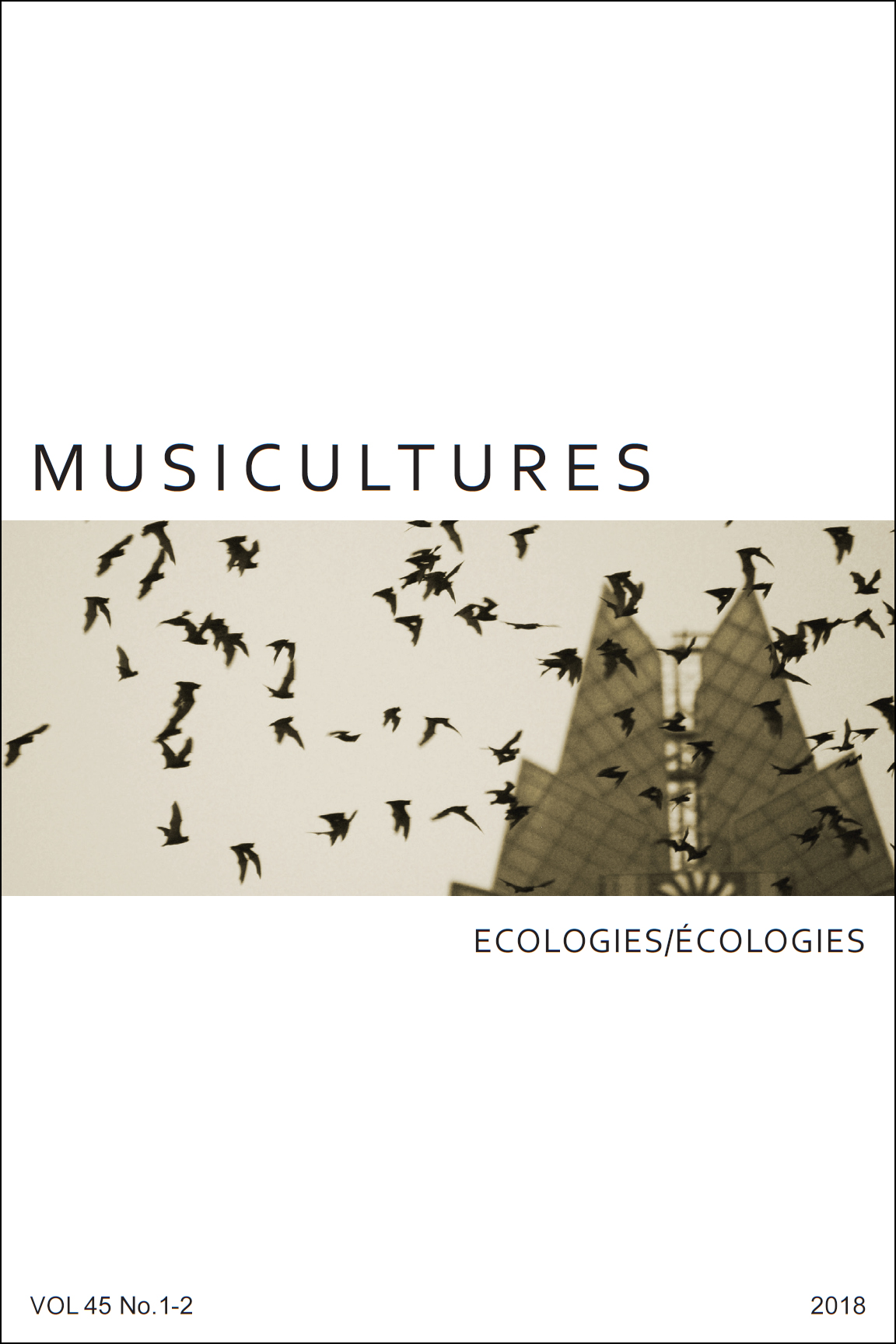Abstract
Michael Pisaro’s fields have ears is a series of ten pieces that embody an ecological approach to composition. The guiding idea behind the series is that the location of a sound is as (or more) important than its timing, and that how a listener understands a sound is affected by both the listener’s and the sound’s position in space. This paper uses the series as an exemplary example of James Gibson’s ecological thought in composition through its foregrounding of motion and space, and its creation of uncanny virtual worlds combining musical sounds, noise, and field recordings. It also explores the idea that Gibsonian perception has significant affinities with Kyoto School aesthetics, and analyzes Pisaro’s music utilizing methodologies from both disciplines.- The author retains copyright over the work.
- The author grants the journal owner (The Canadian Society for Traditional Music / La Société canadienne pour les traditions musicales) an exclusive license to publish the work.
- The author may post a pre-print or post-print version of the work (see definitions below) on a personal website for up to twelve months after the work is published in MUSICultures. After twelve months, the pre-print version must be replaced with the published version.
- The author may deposit the published PDF of the work in a non-commercial online repository twelve months after the work is published in MUSICultures, or any time thereafter.
- Any such deposit must include a link to the work on the MUSICultures website, e.g., https://journals.lib.unb.ca/index.php/MC/article/view/19996
A pre-print is a work-in-progress—a contribution not yet accepted, or perhaps even submitted, to MUSICultures.
A post-print is the version of a contribution after peer review and acceptance by MUSICultures, with revisions completed.
The published version is the PDF file of a contribution as it appears in MUSICultures.
Please note that academia.edu and ResearchGate.com are both for-profit repositories; authors may not deposit the published PDF of the work in these repositories until after the journal’s embargo period.
For permission to reprint or translate material from MUSICultures, please contact Heather Sparling, General Editor of MUSICultures (heather_sparling@cbu.ca).

